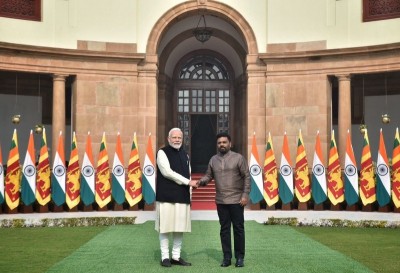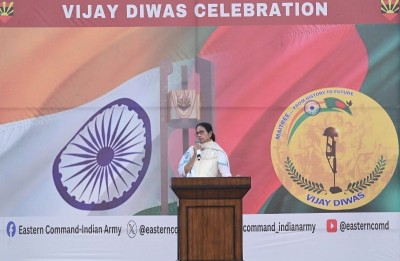
Chhattisgarh: Rajnandgaon: Blocking Maoist Recovery
On September 4, 2017, CPI-Maoist cadres killed a civilian, identified as Bajirao Nareti, near Pendodi village in Rajnandgaon District. "The Maoists rounded up four residents of Pendodi village on Monday night [September 4] and took them outside the village. They trashed the villagers and killed one of them," a Rajnandgaon District Police statement issued on September 5, disclosed. An unnamed Police officer claimed that the deceased Nareti was involved in supplying food grains to the Maoists.
On September 1, 2017, one civilian was killed by CPI-Maoist cadres near Baghdongari village under Aundhi Police Station limits in Rajnandgaon District. On September 2, the Police stated, "Twenty-eight-year-old Pavan Dehari, a resident of Rajkatta village of Rajnandgoan, was shot dead by the Maoists near Baghdongari village under Aundhi Police Station limits at around midnight on Friday [September 1]. Pavan Dehari was an innocent villager. He was working as a carpenter in Rajkatta village." The Police asserted that the killing was an "act of frustration by the Maoists".
According to partial data compiled by the South Asia Terrorism Portal (SATP), at least four civilians have been killed in Rajnandgaon District in Left Wing Extremism (LWE)-linked violence in the current year, 2017, so far (data till October 8, 2017). Since the formation of the CPI-Maoist on September 21, 2004, the District has recorded at least 46 such fatalities and is ranked 5th among a total of 15 Districts from where civilian fatalities have been registered in the State. The other Districts of the State which exceed Rajnandgaon in terms of civilian fatalities are - Dantewada (337 fatalities), Bijapur (173 fatalities), Sukma (58 fatalities) and Kanker (57 fatalities ranking 4th). Chhattisgarh State has recorded a total of 761 civilian fatalities since the formation of the CPI-Maoist.
Moreover, Rajnandgaon District shares the 17th rank, along with Purulia in West Bengal, among the 114 Districts across India, from where civilian fatalities were registered through September 21, 2004 - 2017.
The continued insecurity among the civilian population is primarily due to the Maoists retaining a measure of dominance in their face-off with the Security Forces (SFs) in the District. Since September 21, 2004, the Rajnandgaon District has recorded 41 SF fatalities, as compared to just eight fatalities among the Maoists, establishing a staggering kill ratio of 1:5.12 in favour of the Maoists. Significantly, on July 12, 2009, in a major attack, the worst ever by the Maoists targeting SFs in Rajnandgaon, the Maoists killed 30 Police personnel, including a Superintendent of Police (SP), in simultaneous ambushes and landmine attacks at Madanwada, Khoregaon and Sitagaon under the Manpur Police Station limits. Even if this incident is excluded, the kill ratio favours the Maoists at 1:1.25. Notably, out of 12 Districts in Chhattisgarh from where fatalities among both these categories - SFs and Maoists - have been recorded, the kill ratio in seven, including Rajnandgaon, is in favour of the Maoists. Similarly, out of 69 Districts across 14 States of India, from where fatalities in both these categories have been recorded, the kill ratio in 25 Districts is in favour of the Maoists.
Rajnandgaon District, carved out from the erstwhile Durg District, on January 26, 1973, covers a geographical area of 8,222 square kilometres, out of which 978.87 square kilometres is under forest cover. The District shares its borders with Kabirdham, earlier known as Kawardha in the north and Durg in the east, both in Chhattisgarh; Gadchiroli and Bhandara Districts in Maharashtra, and Balaghat in Madhya Pradesh, in the west; and Bastar in Chhattisgarh, in the south. All these Districts, with the exception of Kabirdham, are Left Wing Extremism-affected. More worryingly, the Bastar District is ranked 11th among the worst affected Districts, out of the 139 Maoist-affected Districts in the country, in terms of fatalities recorded in such violence since 2004. Rajnandgaon was also listed among the 35 worst Naxal (LWE)-affected Districts identified by the Union Ministry of Home Affairs (UMHA) in 2010.
It is not surprising, consequently, that the Maoists, who are facing severe reveresacross the country, including in Chhattisgarh, struggling to recover the few places where they retain some hold. Rajnandgaon fits into this plan and, therefore, falls under the new 'guerrilla zone' - the Maharashtra, Madhya Pradesh and Chhattisgarh Confluence zone' (MMCCZ) - carved out by the Maoists for their operations. Apart from forested pockets in northern Rajnandgaon and parts of Kabirdham and Mungeli Districts in Chhattisgarh, the MMCCZ covers forested pockets in Balaghat District in Madhya Pradesh and Gondia District in Maharashtra. According to reports MMCCZ functions under the Dandakaranya Special Zonal Committee (DKSZC), the most powerful entity within the CPI-Maoist operational setup.
To further their plan, the Maoists are focusing on issues specific to the area in an effort to win over villagers and consolidate their presence. As the village population is predominantly tribal in the new 'guerrilla zone' and reportedly feels 'left behind by development', the Maoists have included issues of land and differential pricing of bamboo and tendu patta (leaves of the tendu tree). An unnamed villager in Malaida of Rajnandgaon District thus noted, "We live on what we can make from bamboo and tendu patta, but we never get a fair price. Contractors take their cut, and people from other States take away the produce." Indeed, according to the "District Development and Diversity Index Report for India and Major States," a joint survey conducted by the US-India Policy Institute (USIPI) and the Centre for Research and Debates in Development Policy (CRDDP), New Delhi, among the 599 Districts across India covered by the survey, Rajnandgaon ranked 414th towards the bottom. The other Districts which fall under MMCCZ and were covered under the survey are - Balaghat (ranked 439th), Gondia (ranked 259th), and Kabirdham/Kawardha (ranked 466th). The report of the survey, which took composite development - measured in terms of economic development and the indices of health, education and material well-being - into consideration, was released on January 29, 2015. Ironically, Rajnandgaon District is the home (Assembly) constituency of three-time Chief Minister Raman Singh.
Importantly, on June 13, 2017, acknowledging the developments in the new MMCCZ, Chhattisgarh's Special Director General of Police (DGP, anti-Naxal operations), D. M. Awasthi observed, "Yes, it is true that they are attempting to create a new zone called MMC. We are well aware of it and have been working against it. The first intimation we got about this development was in April 2016. So far, they have had little success. There have been some close calls with their leadership in the area, and exchanges of fire as well, but no casualties. A new zone is indeed a matter of concern, and requires us to be especially vigilant."
Significantly, on June 21, 2017, a high-level meeting to curb the Maoist problem in the 'MMC Zone' was held in Rajnandgaon District, attended by the Senior Security Adviser in the Union Ministry of Home Affairs (UMHA), K. Vijay Kumar; D. M. Awasthi; Madhya Pradesh's Additional Director General of Police (ADGP, anti-Naxal operations), Sanjiv Kumar Singh; Maharashtra's ADGP, anti-Naxal operations, D. Kanakratnam; Chhattisgarh's Inspector General of Police (IGP, Durg Range), Dipanshu Kabra; and SP's of Rajnandgaon (Chhattisgarh), Gondia (Maharashtra) and Balaghat (Madhya Pradesh). In the meeting, strategies were discussed to thwart Naxal activities on the bordering area through joint efforts of Police from the three neighbouring States. Strengthening of the information network to prepare a special action plan for the exchange of operational intelligence between the affected States was also discussed.
The overwhelming focus is presently on the security situation in the Bastar Division, but it is equally important to block Maoist efforts to regroup in other areas of vulnerability, including Rajnandgaon and its neighbouring Districts, across State lines. Some successes have been achieved by the SFs in Rajnandgaon in the current year. The better kill ratio in favour of the SFs in the current year - 1: 1.66 - is a positive sign. More significantly, SFs have managed to eliminate five Maoists in the current year, the highest number over the last 12 years.
Simultaneously, it is vital to boost development in Rajnandgaon. On February 21, 2016, Prime Minister Narendra Modi launched the Shyama Prasad Mukherji Rurban (rural-urban) Mission from Kurubhat village in the Dongargarh Block (administrative unit) in Rajnandgaon District, with an aim to draw an investment of over INR 50 billion over three years to "transform rural areas to economically, socially and physically sustainable spaces" in Chhattisgarh's Rajnandgaon, Dhamtari, Kawardha and Bastar Districts. Also, between May 8 and June 8, 2017, Chhattisgarh Police, the Indo-Tibetan Border Police (ITBP) and Madhya Pradesh's Hawk Team (a specialised unit for countering terrorist and Naxal operations), set up a joint temporary camp at Gatapar village in Abhanpur tehsil (revenue unit) in Raipur District to conduct operations and facilitate the building of a 13-kilometres road from Gatapar village in Raipur to Malaida village in Rajnandgaon. An ITBP officer guarding the under-construction road, according to a report dated June 15, 2017, noted, "If the Maoists are successful in setting up base here, it will be difficult to uproot them. This can potentially become another Bastar. So it is our job to dominate the area, go to villagers and talk to them, and provide security to the roads."
Support Our Journalism
We cannot do without you.. your contribution supports unbiased journalism
IBNS is not driven by any ism- not wokeism, not racism, not skewed secularism, not hyper right-wing or left liberal ideals, nor by any hardline religious beliefs or hyper nationalism. We want to serve you good old objective news, as they are. We do not judge or preach. We let people decide for themselves. We only try to present factual and well-sourced news.







